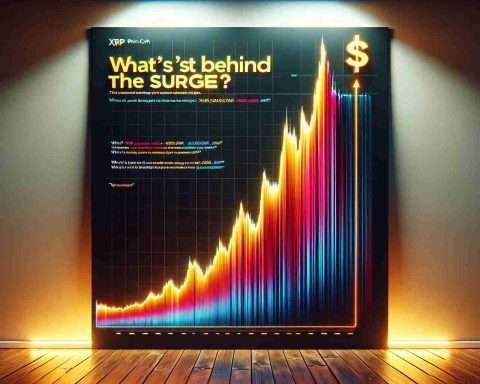The Latest Insights on the REIT Market
The recent webinar hosted by Nareit and Institutional Real Estate, Inc. (IREI) spotlighted the tumultuous journey of Real Estate Investment Trusts (REITs) in the fourth quarter of 2024. John Worth, from Nareit, shared a comprehensive analysis of REIT performances, revealing a total return of just 4.9% for the year after a significant drop of 8.2% in the last quarter. This downturn was largely attributed to rising interest rates and their impact on the correlation with the 10-year Treasury yields.
Leading the sector performance were data centers and lodging, posting returns of 7.5% and 1.6% in the fourth quarter. Specialty properties and healthcare also exhibited strong yearly returns of 35.9% and 24.2%, respectively. Geoffrey Dybas, from Duff & Phelps, pointed out the challenges in the industrial sector, anticipating a more balanced supply-demand scenario in the coming years.
Dybas emphasized a compelling case for REITs to potentially surpass the S&P 500, referencing past performance patterns during tech booms. The conversation also highlighted how REITs are effectively managing debt through strategic capital issuance and international debt markets.
As the webinar wrapped up, Worth outlined Nareit’s outlook for 2025, emphasizing key trends influencing the global real estate landscape. The next installment of this insightful discussion is scheduled for April 23, where the focus will shift to first-quarter performances.
Broader Implications of REIT Market Trends
The performance fluctuations of Real Estate Investment Trusts (REITs) extend far beyond mere investment metrics; they resonate deeply across society, culture, and the global economy. As integral components of the housing and commercial property sectors, REITs profoundly influence residential availability and rates. A downturn in this market can exacerbate housing supply issues, particularly in urban areas where demand continues to outpace supply. This dynamic could ultimately fuel discussions around affordable housing, forcing policymakers to take action.
Culturally, the rise and fall of REITs reflect societal attitudes toward investment and property ownership. As younger generations show hesitance in traditional homebuying, relying more on rental markets, REITs representing multifamily housing can play pivotal roles. Their performance may directly affect rental prices, thus impacting everyday life for millions.
From an environmental standpoint, REIT investment strategies increasingly incorporate sustainability. A growing number of trusts are aligning with environmental, social, and governance (ESG) criteria, addressing climate concerns in their property portfolios. This shift not only influences immediate real estate practices but can reshape long-term investment trends, signaling a broader recognition of sustainable development’s significance in economic models.
Looking ahead, as interest rates stabilize, experts predict a resurgence in REIT viability. Should the sector capitalize on innovative technologies and adaptive reuse of spaces, future trends may align with the needs of a changing global landscape—one more attuned to the consequences of climate change and shifting societal demands. Thus, the upcoming months in the REIT sector will be crucial in determining its trajectory and influence on both local and global fronts.
Unlocking the Future of Real Estate Investment Trusts (REITs) in 2025: Trends and Analysis
Overview of the REIT Market
The Real Estate Investment Trust (REIT) market has shown a dynamic evolution, particularly in the wake of economic shifts related to interest rates and overall market confidence. According to insights from a recent webinar hosted by Nareit and Institutional Real Estate, Inc. (IREI), the REIT sector faced a challenging landscape in the fourth quarter of 2024, culminating in a modest total return of 4.9% for the year. The significant decline of 8.2% in the last quarter highlights the volatility that can be attributed to rising interest rates, particularly their correlation with the 10-year Treasury yields.
Sector Performance Breakdown
Despite the general downturn, specific sectors within the REIT market demonstrated resilience and promise:
– Data Centers: Achieved a return of 7.5%, underscoring the growing demand for data storage and management solutions amidst a digital transformation.
– Lodging: Managed a return of 1.6%, reflecting gradual recovery trends in the hospitality and travel sectors.
– Specialty Properties: Showed remarkable yearly returns of 35.9%, capturing investor interest in unique asset classes.
– Healthcare: Rose by 24.2%, driven by the ongoing need for health services, especially in a post-pandemic world.
Anticipated Market Adjustments
Geoffrey Dybas from Duff & Phelps highlighted potential challenges within the industrial sector, foreseeing a shift toward a more balanced supply-demand environment over the upcoming years. Analysts are keen to monitor how these changes will influence investment strategies and overall sector performance.
Strategic Insights for Investors
Dybas also positioned REITs as a compelling alternative to the S&P 500, especially for investors looking for value in the current economic landscape. Historical performance during tech booms suggests that REITs possess inherent strengths in navigating market volatility.
Anticipating future trends, actors in the REIT market are focusing on efficient debt management through strategic capital issuance and tapping into international debt markets. This approach may bolster financial health and position REITs favorably as the global economy stabilizes.
What Lies Ahead: Nareit’s 2025 Outlook
As the conversation shifts to future expectations, Nareit’s outlook for 2025 reveals several key trends that could shape the REIT landscape:
– Sustainability Focus: Increased emphasis on environmentally sustainable practices and the integration of energy-efficient technologies in property management.
– Technological Advancements: Adoption of innovative technologies and smart building solutions will likely enhance operational efficiencies and attract tech-savvy tenants.
– Global Diversification: REITs may continue to explore international markets to capitalize on growth opportunities outside of traditional geographical constraints.
Conclusion: Preparing for Change
The next installment of this discussion is scheduled for April 23, where first-quarter performance insights will be shared. Investors and stakeholders in the REIT market should stay informed about emerging trends and potential market shifts, keeping a keen eye on how these developments influence investment strategies.
For further insights into the REIT market and opportunities, visit Nareit for extensive resources and analysis.











